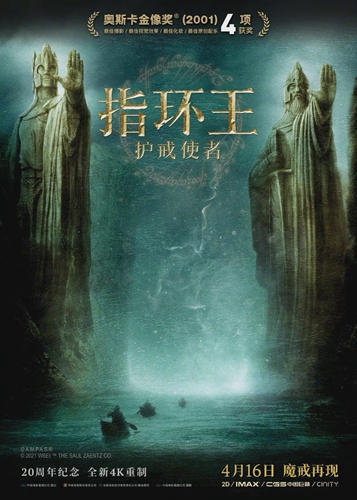The journey to Middle-earth is a timeless one, etched into the cultural consciousness by J.R.R. Tolkien’s masterful prose and immortalized on screen by Peter Jackson’s groundbreaking film trilogy. For millions, these films are more than just movies; they are monumental experiences. It is with great anticipation, then, that fans and cinephiles greet the news of a significant re-release. This isn’t merely a repackaging of old discs but a meticulous, frame-by-frame restoration, bringing the epic saga into the ultra-high-definition era. This process, in many ways, mirrors the complex world of Software Debugging. Just as a developer refines code to create a flawless application, the restoration team has embarked on a quest of cinematic Code Debugging, hunting down visual and auditory “bugs” to present the definitive version of a masterpiece. This deep dive into the re-release explores the technical artistry, the creative decisions, and the immense effort involved in this modern cinematic pilgrimage, a process filled with its own unique Debugging Techniques.
The Fellowship of the Frame: Deconstructing the 4K Restoration
The core of this re-release is the stunning 4K Ultra HD remaster of both The Lord of the Rings and The Hobbit trilogies. Supervised by Peter Jackson himself, this was not a simple upscale. Instead, the team went back to the original 35mm film negatives, scanning them at a pristine 4K resolution. This endeavor can be likened to a massive legacy code refactor in the world of Web Development. The original “source code”—the film negative—was revisited to build a new, more robust, and visually superior product. The primary goal was to eliminate inconsistencies and artifacts that have existed since the initial release, a classic case of Bug Fixing.
Visuals: A Masterclass in Frontend Debugging
The most immediate change is the visual fidelity. The original trilogy was a pioneer in digital filmmaking, but it was also a product of its time. The process of blending practical effects, miniatures, and early 2000s CGI created visual seams that were less apparent on DVD but become glaring in 4K. The restoration process was a painstaking exercise in Frontend Debugging, ensuring the user interface—the visual experience—was seamless.
Peter Jackson and his team used modern tools, analogous to sophisticated Developer Tools like Chrome DevTools, to inspect every frame. They performed a kind of visual Static Analysis, identifying issues like film grain inconsistencies, color timing mismatches between digital and film shots, and dated CGI elements. For example, some scenes in the original theatrical cut had a noticeable color difference between shots filmed on set and those created digitally. The team meticulously re-graded the entire trilogy to create a cohesive visual language. This is akin to a developer using Profiling Tools to ensure consistent Debug Performance across an application, eliminating visual stutters or UI inconsistencies. This level of detail extends to removing minor artifacts and sharpening details, making the intricate designs of Weta Workshop’s armor and the sweeping landscapes of New Zealand more breathtaking than ever before.
Audio: The Backend Debugging of Middle-earth

While the visual upgrade is the most obvious, the audio remaster is equally significant. The re-release features a new Dolby Atmos soundtrack, a powerful upgrade from the original 5.1 surround sound. This represents a form of Backend Debugging, overhauling the foundational audio architecture to support a more immersive experience. The sound engineers had to deconstruct the original audio stems and re-mix them for an object-based soundscape. This allows for sounds to be placed with pinpoint precision in a three-dimensional space, making the whisper of the One Ring feel like it’s right beside you or the roar of a Balrog echo from the depths below.
This process required intense Testing and Debugging to ensure that the new mix served the story. A poorly executed Atmos mix can be distracting, a “bug” that pulls the viewer out of the experience. The team had to ensure that every element, from Howard Shore’s iconic score to the clang of swords, was perfectly balanced. This is similar to API Debugging, where developers ensure that different services (dialogue, effects, music) communicate flawlessly to produce the desired output without generating Node.js Errors or other backend exceptions.
A Systematic Approach: Applying Debugging Best Practices to Filmmaking
The success of this restoration lies in its systematic approach, mirroring the most effective Debugging Best Practices in software engineering. The process wasn’t about changing the films but perfecting them, honoring the original intent while leveraging new technology.
Step 1: Reproducing the “Bug” – Analysis and Error Tracking
The first step was a comprehensive audit of the original films on modern high-resolution displays. This allowed the team to identify and catalog every visual and auditory imperfection, a process not unlike professional Error Tracking and Error Monitoring. They analyzed Stack Traces of the filmmaking process, looking at original production notes and dailies to understand why certain creative choices were made. This deep dive helped differentiate intentional artistic choices from technical limitations of the time. This is a critical step in both filmmaking and JavaScript Development; understanding the root cause of an issue (or a JavaScript Error) is essential before attempting a fix.
Step 2: The Debug Console – Tools of the Trade
The restoration team used a suite of advanced digital tools that function as their Debug Console. Digital color grading software like DaVinci Resolve, combined with custom-built plugins, allowed for granular control over every aspect of the image. This is the cinematic equivalent of using the built-in debugger for Node.js Debugging or the powerful Python Debugging tool, `pdb`. For instance, a common issue was digital noise in low-light shots. Using sophisticated noise reduction algorithms, they could “clean” the image without sacrificing detail, much like a developer would optimize code to improve Memory Debugging and reduce an application’s footprint.

Here is a conceptual pseudo-code representation of their workflow:
function remasterScene(scene) {
// Static Analysis: Identify known issues from original print
let issues = identifyArtifacts(scene.originalNegative);
log(`Found ${issues.length} potential 'Python Errors' in scene.`);
// Dynamic Analysis: Apply corrections and preview
let correctedVisuals = applyHDRGrade(scene.originalNegative);
let correctedAudio = remixForAtmos(scene.originalAudio);
// Unit Test Debugging: Check individual components
assert(visualsAreConsistent(correctedVisuals), "Visual consistency check failed!");
assert(audioSyncIsPerfect(correctedAudio, correctedVisuals), "Audio sync error!");
// Integration Debugging: Ensure all parts work together
let finalScene = combineElements(correctedVisuals, correctedAudio);
log("Integration Debugging complete. Scene ready for production pipeline.");
return finalScene;
}
Step 3: Asynchronous Debugging and Complex Pipelines
Remastering a film trilogy is not a linear process. Different teams work on visuals, sound, and quality control simultaneously. This complex workflow is similar to the challenges of Async Debugging in modern web applications. Just as a developer needs to trace an issue through multiple asynchronous calls, the project lead for the restoration needed to manage a pipeline where visual effects updates in one shot could impact color grading decisions in another. This required robust version control and a clear workflow, much like a CI/CD Debugging pipeline, to ensure that changes were integrated smoothly without introducing new “bugs.” This is particularly relevant in complex systems, whether it’s a film with thousands of VFX shots or a distributed architecture requiring Microservices Debugging.
The Impact on the Legacy: Production Debugging and Fan Reception
Releasing a remastered version of a beloved classic is the ultimate form of Production Debugging. Once it’s out in the wild, millions of “users”—the fans—will scrutinize every change. The challenge is balancing technical perfection with artistic preservation. Some early viewers noted that the increased clarity and removal of film grain made certain scenes look “too digital,” a common debate in film restoration. This feedback loop is invaluable, similar to how developers use user reports from production environments to inform future patches and updates.

This re-release also serves as a masterclass in Full Stack Debugging. The “frontend” (the stunning 4K visuals) and the “backend” (the immersive Atmos audio) have both been overhauled to work in perfect harmony. This holistic approach ensures the final product is more than the sum of its parts. Whether you are working on React Debugging for a user interface or Express Debugging for a server, the principle is the same: every layer of the stack must be optimized for the best possible end-user experience. From Django Debugging in a Python web app to ensuring a seamless experience in Mobile Debugging, the goal is a cohesive and flawless final product.
The process even touches on modern infrastructure challenges. Managing the petabytes of data involved in scanning, restoring, and rendering these films is a monumental task, akin to the complexities of Docker Debugging or Kubernetes Debugging, where entire environments must be managed and orchestrated efficiently.
Conclusion: The Journey Doesn’t End Here
The 4K re-release of The Lord of the Rings is a monumental achievement, a testament to the power of technology to preserve and enhance art. It’s a journey back to Middle-earth that feels both familiar and breathtakingly new. By approaching the restoration with the discipline and precision of an expert software developer, applying meticulous Debugging Tips and a philosophy of continuous improvement, Peter Jackson and his team have polished a masterpiece to a brilliant shine. They have navigated the complex worlds of Browser Debugging for visual consistency and deep System Debugging for the audio architecture.
This project was not merely about fixing errors; it was about fulfilling the original vision with tools that were once the stuff of fantasy. Through a process of careful Logging and Debugging, every decision was tracked, every change tested. The result is the definitive way to experience this epic saga, ensuring that the journey of Frodo and the Fellowship will continue to inspire audiences for generations to come, presented with a clarity and power that is nothing short of magical.













